 Stuck In The 2000's!
Stuck In The 2000's!
 Stuck In The 2000's!
Stuck In The 2000's!
This is a blog where I discuss and post about all things 2000's. With this totally irrelevant site I intend to express my love and fondness for many of the charming, surreal, and incredibly unique trends, products and ideas that sprouted up during this wild time in modern society. I may write about other topics, at my leisure. I'll try to separate these entries from the nostalgic 2000's stuff as to maintain some sense of organization, but as I'm just starting out with HTML and Neocities site design, it may take some time for me to fully develop the page to my liking. To the lone few netizens reading this text: please bare with me. :)


Wow! The site has passed 2,000 visits! That's an important milestone... This site is called "Stuck in the 2000s", after all! I'd like to thank all of the people reading this site for the apparent support. While I don't personally know any of you or if you like the site or the premise, I do check in to this place's analytics from time to time and I'm constantly surprised by the speed at which people seem to be finding this place! Just a couple days ago I wasn't even close to 2,000, and now that number has already been surpassed. I take that to mean that people must have found something they like about this place enough to keep returning, which is something I never expected.
Due to the growth in readers the blog has experienced + a recent lull in topics I've had the interest to do long writings about, I wanted to go ahead and add my e-mail address to the header of the site! I don't check it very often, but if anyone that stops by from here on out has anything they'd like to share or a question about 2000's related topics, feel free to hit my inbox! I will say, however, I intend to keep this site focused more on the topic at hand than writing about myself or my life. Social networking sites like Twitter, Instagram, Reddit, and Facebook all already encourage frequent sharing of personal information and beliefs, usually to negative consequences. I don't want this endeavor to just become a glorified social media page. My goal here is simply to have a nice, quiet little place where I can write about the nostalgic and occasionally long-forgotten topics that interest me without much personal involvement, nothing more. This approach may seem counter-intuitive to the standard motives behind having your own blogging site, but to keep the content to a level of quality and depth I can be proud of I think it's a necessary step in the process and I hope you all can understand that.
Anyways, I'll mention that I cannot guarantee a response to anything I am sent. I'll do my best to read any e-mails I receive, but the only thing I use this e-mail address for is this site so I don't check it in my everyday life. Regardless, I hope I can find some new and enjoyable subjects by opening up a little line to the outside world, and maybe getting some submissions for topics that I previously may not have known of! :D
Hi! It's been quite some time. I think I've re-evaluated how I want to approach updating this site. At first I assumed I would update it on a constant schedule, though I realized I have no real obligation and shouldn't push myself to work on the site when I don't have any good ideas! Quality over quantity, after all. Hope you all understand! I also intend to add an extra archive page to make this mess a little easier to read and navigate, plus setting up the foundation for some future stuff I might do on the site. I have a lot of ideas, I just need to find the best way to implement them! 
Moving on to the topic of this article, I've noticed an odd trend lately that has had me reminiscing on the culture of the early-mid 2000's Internet and it's origins, which I find really fascinating. It all started with this video. This is an edit of the 2007 anime adaptation of Lucky Star, a 2003 slice-of-life comedy manga focusing on four high-school aged girls living their daily life in Kasukabe, Japan. While it came a little later than some other anime series that many of you may think of first when hearing "early-mid 2000's anime", to me it cemented itself as a very notable series strictly for it's recognizability and prevalence within Internet culture of the time. Personally, I remember seeing pictures and videos of this series everywhere back in the day. At the time, it annoyed me. I was never much of an anime fan then, and honestly I still don't watch or keep up with any anime series just out of a lack of interest. However, upon seeing this video in my feed and falling down the deep rabbit hole of similar edits in the Recommended tab, I began to form more of an appreciation for the aesthetics and themes of these shows that so heavily influenced the Internet and its culture today.
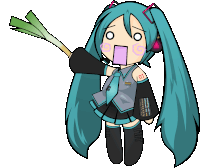
The significance anime had on the early Internet can absolutely not be understated, and when discussing the subject it's important to note the change in reception anime as a whole has received over the past several years. Even as late as the mid-2010's, anime was considered a very niche interest by many who didn't keep up with the medium. The common image of an anime fan was an unhygienic, socially awkward neckbeard-toting weeaboo with a body pillow and katana collection. Why were anime fans so passionate? Well, it had to do with a couple factors, not the least of which being the availability of anime. Nowadays, anime is as accessible as any other medium of entertainment. Streaming services like Crunchyroll and Funimation allow you to browse massive libraries consisting of hundreds of professionally produced, fully dubbed/subbed series with ease in the highest quality your heart could possibly desire, and slowly but surely anime has found it's way onto much more mainstream services like Netflix and Hulu. Then there's the offline component... I can almost guarantee that, outside of living in a small town or rural countryside area, you probably have an anime-centric comic/game store somewhere nearby that carries plenty of anime merch and DVDs to allow you to browse and explore genres with relative ease. Back in the early-mid 2000's, this was practically unheard of outside of some sparse import shops dotted around the map like rare gemstones in the dirt. Without any streaming services to instantly beam their favorite series onto their screens at the push of a button, weebs the world over would have to make the long, treacherous pilgrimage to their nearest import shop (usually a special occasion as again, these stores could be very rare in many areas) to acquire their beloved figurines and manga issues. If you wanted to watch anime online then, your best bet was hopping onto YouTube and browsing through heaps of short, extremely compressed, usually non-translated clips, uploaded by strangers and liable to disappear from the face of the site as quickly as you found them. Then, there were torrenting sites and other shady places that you were better off avoiding lest you wanted your computer to contract something truly ghastly and suffer a slow death at the hands of whatever malware was injected into your .wmv.exes. Even just the thought of it makes my modern PC tremble...
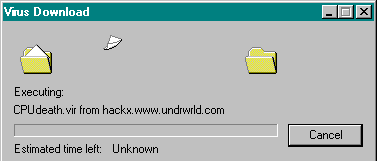
All these factors and more basically ensured that normal people with no access to the Internet did not become anime fans. Not typically, anyways. If you were an anime fan at this time, it's because you really enjoyed anime. This level of passion for such a niche, obscure interest (at least in the West) meant that anime fans could struggle to find others in real life who shared their enjoyment of the art form to the same degree. Sure, there were still things like Cartoon Network's Toonami and big hits like Dragonball Z that got some normal folk to enjoy the shows, but at the end of the day this was not a majority of the people into anime, and it led many an oldschool weeaboo to head where else but online to discuss their love for Japanese cartoons with likeminded individuals. These people shared common interests united by a heavy degree of passion and the power and freedom of communication and expression that the old Internet allowed, which is what eventually led to the birth of many prevalent communities (most of which are all but extinct nowadays). The biggest example that immediately comes to mind is 4chan. Now, yes, 4chan has a long history of it's own and I understand it may be a controversial site for a few of you. However, looking past everything the site became later on it's important to remember what it started as; an anonymous imageboard for Westerners who wanted somewhere they could discuss and express their love for anime. 4chan still holds a heavy emphasis on anime and otaku culture to this day with several boards dedicated to the topic, and I would be willing to bet over 70% of the site's current userbase enjoys or has enjoyed anime at some part in their life, and probably discussed the medium on 4chan. As we all know, 4chan birthed many of the Internet's oldest and most influential memes... Lolcats, the Rick Roll, many of the early impact font style meme formats such as the Advice Animals, the spread of Chocolate Rain, the hacker group Anonymous, etc. etc. etc... 4chan, whether you like it or not, has it's hands in all of these very important parts of early Internet culture and many, many others. All of this because early 2000's anime fans wanted somewhere to discuss anime.

So, why the tangent about 4chan? Well, I think it perfectly highlights the domino effect anime fans had back at this point in time that led the Internet to develop in the way that it did. 4chan was undebatably the biggest hive of anime-centric discussion on the early Internet for a very long time, and we can see the way the passion anime fans from this point had led to it becoming a titan of classic Internet culture and memes, to the point where trends such as the Rick Roll persist even today amongst the completely different contemporary online ecosystem; and it all started because anime fans were reliant on the Internet to express their love for the widely varied, now massively popular art form that it is today. So, the next time you see an anime picture or video meme/edit from this time period, take some time to appreciate history. Whether or not you like anime, (again I want to clarify I don't actually watch the stuff myself) you have to admit that it's had a stranglehold over the culture of the Internet we use and enjoy, both today and over 15 years ago when the earliest generation of online weeaboos was beginning to carve out a place for themselves on the net.


Hello, everyone! It's been a while since I've posted. Not the best first impression for a new blogging site I'm sure, but October became an incredibly busy month for me so I had to put writing it on the backburners while I finished some important work. I'm back for now though! Hopefully November will give me more time to work on things here. Anyways, recently I've become (somehow) even MORE invested in an aspect of mid-2000's technology that has always been important to me; Windows Vista! For those who are somehow unaware, Windows Vista was the operating system released by Microsoft in 2006. It was meant to be a successor to Windows XP, the undebatably more well-known and popular computer OS from around this time. It gave everything a glassy, transparent, rounded look that was reminiscent of many other pieces of early to mid-2000's tech aesthetics.
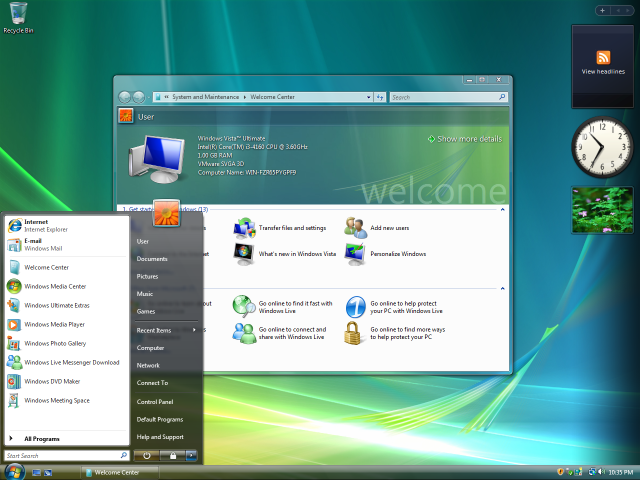
This look persisted throughout the entire OS, from the Start button that would come alive and glow with color as you moused over it, to the shiny and rounded interface program icons, to even the File Explorer's preview icons that featured psuedo-3D looking icons displayed on light blueish-greenish square glass trays. The entire OS shared this visual style, dubbed the Windows Aero theme, and it is by far one of my favorite parts of the OS. Aero was designed in a way to convey to the user that they were now a part of the future. And this was just how the future looked back then! While none of its components were actually 3D renders floating around the user's PC, they were still designed in a way to feel as if there was more to these buttons and windows beyond simple icons and text. Transparency in the window borders and various bars around the screen gave an illusion of depth, while the glass present in many of the system's icons made the user feel as if there was some external light source just out of sight, whose rays beamed across their entire computer like the sun, refracting and creating a colorful display that would keep the user engaged in even the most mundane parts of their computer's software. It wasn't the most classy look ever, in fact for many professionals it probably went on to become perfected in 2009's release of Windows 7 with many of the bright colors and elements toned down to become more subtle and refined.

However, where the seriousness and market appeal of the look increased with these changes, the sense of life and character in the Windows experience would begin to slowly fade, until Windows 8 came along in 2012 and completely filtered out the detail and intricacy of the computing experience with the Metro theme which persists even into Microsoft's modern operating systems, namely Windows 10 and 11. This has been one of the saddest parts of watching tech from this time period "evolve". If you've ever looked at the UIs that permeate modern tech products and wonder why they feel so soulless and empty, it's due to the increased use of minimalistic design in tech that has expanded to everything from OS design to webpages, programs, games and more. Gone are the pretty and genuinely fascinating icons and renders of Aero's glassy, diverse design language, only to be replaced with thin lines, simplistic shapes, and flat colors.
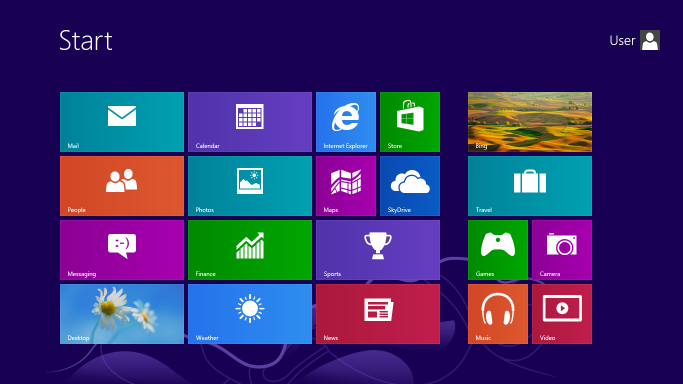
For someone like myself who has always loved and appreciated a sense of uniqueness and character in the design of the tech they use from day to day, this has been a heartbreaking design trend and sadly, one that likely will not go away anytime in the near future. If you're reading this site than I suspect you may be someone who feels similarly. Are we just forced to put up with empty corporate design like this forever? How can we combat this trend without sacrificing its functionality? Well, thankfully the thing about tech is that there are always other options, and for these ones you don't even have to be a total nerd to get them working! 
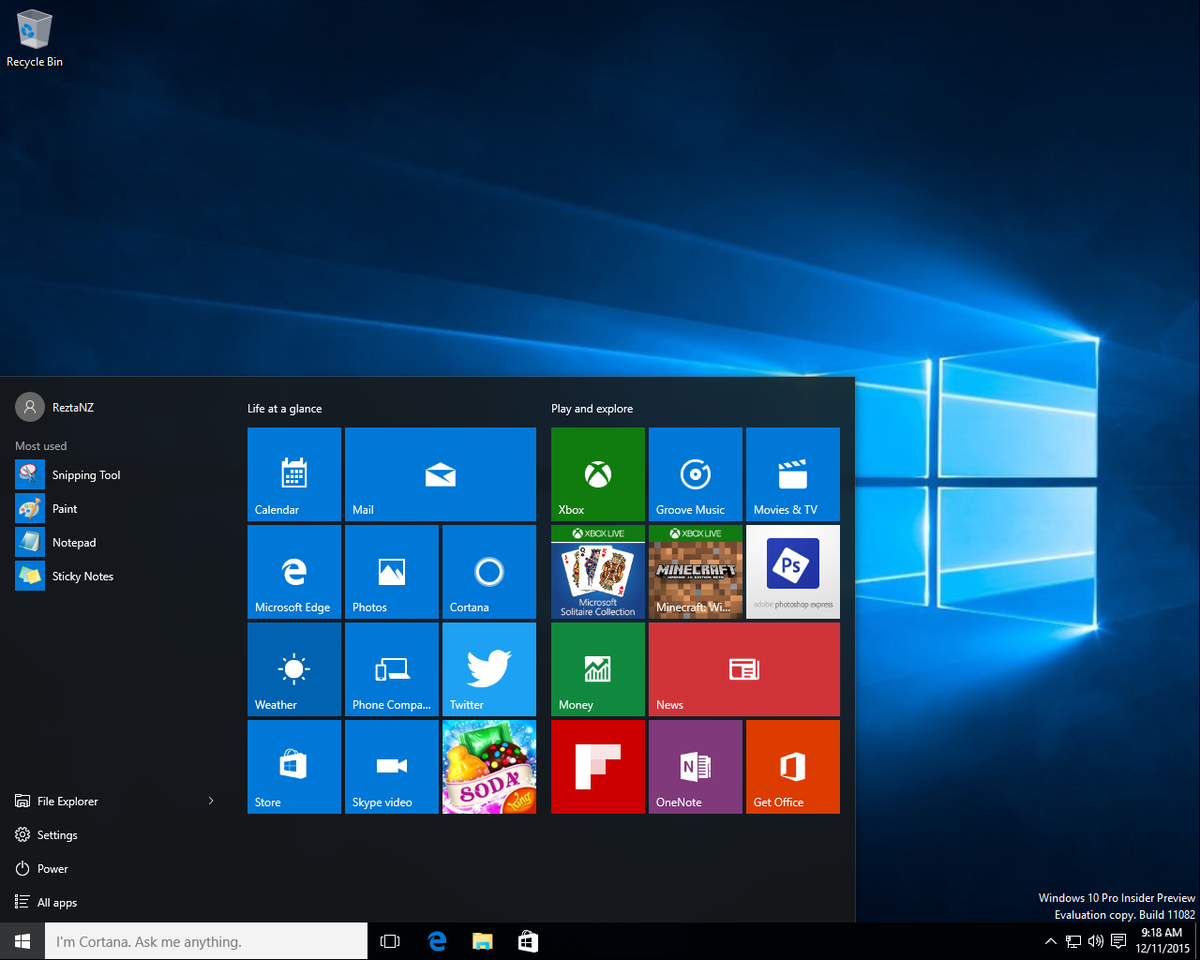
If you're currently reading this, then you most likely use a PC that looks something like the picture shown above. This is Windows 10. It's been around for a while and is honestly a fine operating system, though it of course suffers from the soulless design issue mentioned earlier. You could theoretically install a Vista or Windows 7 ISO and switch back to using one of those older operating systems, but then you'll lose out on lots of important stuff; certain features, new security updates, support from various newer programs, etc. Unfortunately, despite my love for Vista it had many flaws and received terrible critical and consumer reception upon release. Many of these issues were ironed out in Windows 7 and so many people do still use it, but it's still been over 13 years since the release of that OS and over 2 years since extended support for it ended in 2020. Thankfully, there is a solution that allows you to keep the functionality, support, and usefulness of Windows 10 while also bringing back the visual style of the operating systems of days gone. Allow me to introduce you to videos by two YouTubers, one called Windows Saturn and the other Michael MJD
These videos both showcase ways to transform your boring old Windows 10 installation to one using the classic Aero glass theme while still maintaining all of the features! Not only can you change visuals, but also get the proper cursors, sounds, and even Start Menu and Volume Control GUIs that perfectly resemble and function like the Windows Vista/7 era ones! Perfect! 
I didn't go over aspects such as the classic sounds and Start Menu, but I definitely intend to come back to this topic more in the future so I'm sure I'll get to those in time! Anyways, I recommend using a mix of the two videos to customize your PC to your liking. The video by Windows Saturn showcases how to get closer to the Windows 7 style so I don't follow all of the presets there, but many design elements of Vista and 7 overlap anyways and the nifty .zip package in the description of the video comes pre-configured to be a very easy and simple process as long as you know your way around the File Manager! Michael MJD's video is slightly harder to follow along with due to the lack of a prepackaged .zip folder with all of the necessary tools and elements required, but it can help to get your PC looking more like the Vista design than the 7 one. Anyways, I can assure you it's 100% safe and also totally effective. Below I'll attach a picture of my desktop with the customizations applied for your viewing pleasure! (With my desktop icons and name hidden, of course.)
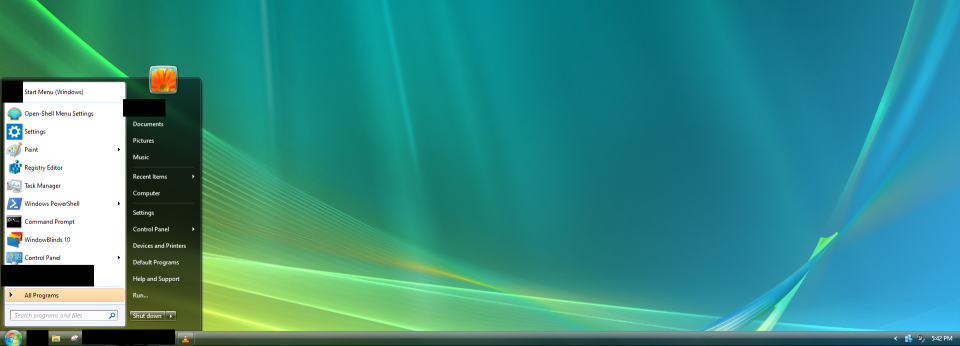
And yes, I am currently using Windows 10! See how great these customizations are at restoring the life to your PC? You can even get the old Vista games like Purble Place and Inkball, and applications like Windows Movie Maker, Vista-era MS Paint, and Windows Photo Viewer (different from the current, terrible "Photos" app pre-installed on all Windows 10 PCs.) I would highly recommend these customizations to anyone who's interested. Powering up my modern Windows 10 PC and seeing the Windows Vista boot screen and hearing that iconic start-up sound reminds me of a time when tech companies designed their products to be interesting and unique, rather than simple to a fault and hopelessly derivative. Just make sure to create a restore point of your PC (it takes like 15 seconds) and backup any important files in case anything goes wrong. Safety first! But really, as long as you follow the videos and don't mess with anything essential you should be fine. ![]()
Well, we certainly got off-topic there.  Before we move on, just a quick note that Windows Saturn also has similar guides available for Windows 10 to Windows XP transformations, in case your nostalgia is placed somewhere else. Anyways, as mentioned previously I'll definitely be coming back to this subject sometime. Who knows when, though. I hope you all were able to find some kind of enjoyment in reading my long-winded walk down memory lane. Share it with your friends if you found it informative, dumb, or otherwise entertaining, and look out for new updates when I get around to it.
Before we move on, just a quick note that Windows Saturn also has similar guides available for Windows 10 to Windows XP transformations, in case your nostalgia is placed somewhere else. Anyways, as mentioned previously I'll definitely be coming back to this subject sometime. Who knows when, though. I hope you all were able to find some kind of enjoyment in reading my long-winded walk down memory lane. Share it with your friends if you found it informative, dumb, or otherwise entertaining, and look out for new updates when I get around to it.
Well, here it is! The first of, hopefully, many posts to come on this site. To be honest, I've been wanting to get to working on the place for a while now but got too busy. Now that changes! Or at least, it should depending on if I'm able to get separate pages for each topic set up and linked here XD ... That really makes me wonder about what this site may look like several years from now if I don't abandon it. Maybe it'll have custom cursors, or comment sections, or even a navbar!!! O_O
I guess you'll have to wait and see ;)


